Tooth Extraction
Oral and Maxillofacial Surgery
Tooth extraction is a common dental procedure performed when a tooth is beyond repair or poses a risk to the health of surrounding teeth. Extractions may be necessary due to advanced decay, infection, impacted teeth, or orthodontic treatment requirements. This procedure can be categorized into simple and surgical extractions. At LHC Clinic, we provide comprehensive information on the reasons for tooth extraction, the process, and the essential aftercare needed for optimal healing.
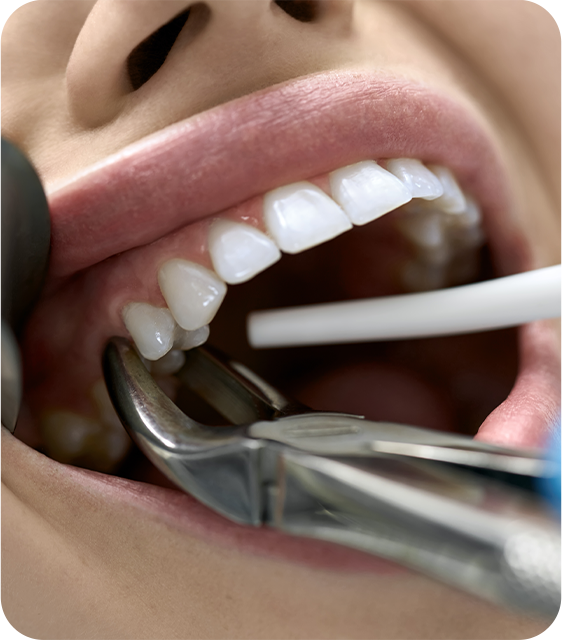
What is Tooth Extraction and Why Might it Be Necessary?
🦷 What is Tooth Extraction?
Tooth extraction involves the removal of a tooth from its socket in the jawbone by a dentist or oral surgeon. Reasons for tooth extraction include:
- Advanced Cavities
Teeth with severe decay that cannot be saved through root canal treatment. - Tooth Infections
Infections within the tooth structure that can spread and affect surrounding tissues. - Tooth Trauma
Teeth severely damaged by accidents or injury may require extraction. - Orthodontic Treatments
In some cases, teeth need to be removed to correct alignment and prevent overcrowding. - Impacted Teeth
Teeth, such as wisdom teeth, that are stuck beneath the gum or only partially erupted may need to be extracted to prevent pain or infection.
Extraction is typically a last resort, and preserving the tooth through treatment is always the preferred option when possible.
Simple and Surgical Tooth Extractions
🦷 Tooth Extraction Methods and Simple Extraction Stages
Tooth extractions can be performed using two primary methods: simple extraction and surgical extraction, depending on the condition of the tooth and its position.
Simple Tooth Extraction Stages
A simple extraction is typically performed on teeth that are fully visible in the mouth. The stages are as follows:
- 1. Examination and X-ray
The dentist evaluates the tooth’s condition using X-rays. - 2. Anesthesia
Local anesthesia is administered to numb the area and prevent pain during the procedure. - 3. Loosening the Tooth
Special dental instruments (forceps and elevators) are used to loosen the tooth from its socket. - 4. Tooth Removal
The tooth is gently removed, and the extraction site is cleaned.
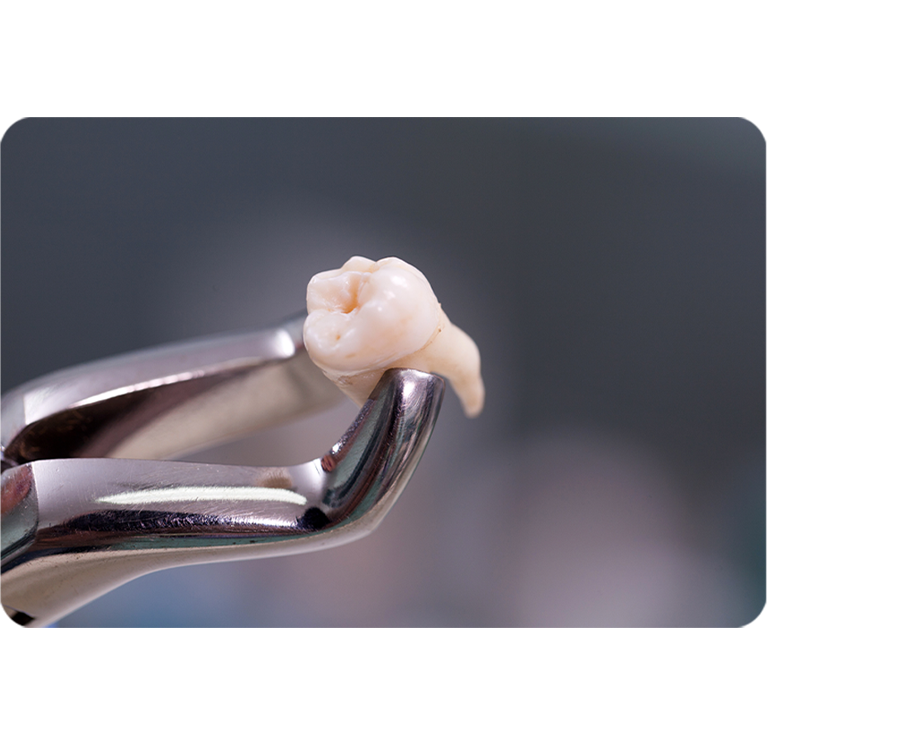
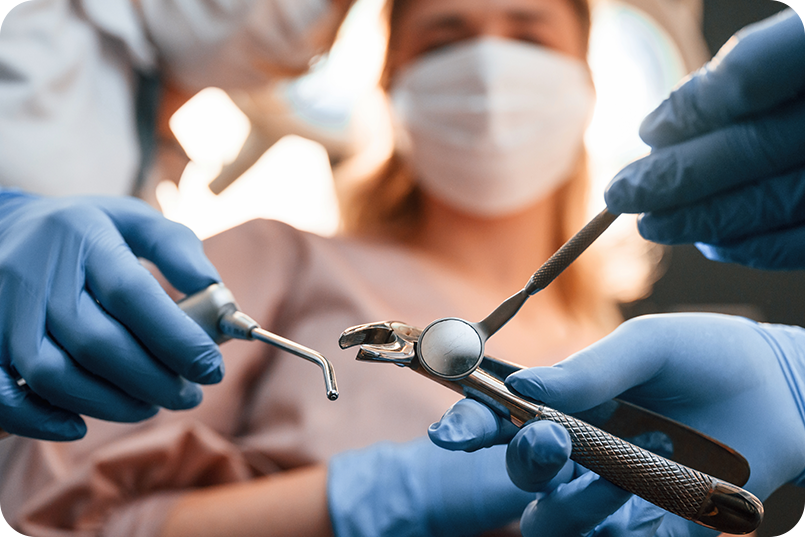
Surgical Tooth Extraction Stages
🦷 Surgical Tooth Extraction Stages
For teeth that are impacted or broken, surgical extraction may be required. The steps are:
- 1. Anesthesia
Local or general anesthesia is used to ensure comfort throughout the procedure. - 2. Incision in the Gum and Bone
The gum is opened, and bone tissue may be removed to access the impacted tooth. - 3. Tooth Sectioning
The tooth may be divided into smaller pieces for easier removal. - 4. Stitches and Cleaning
The extraction site is cleaned, and sutures are placed if necessary.
Surgical extraction generally involves a longer recovery period compared to simple extractions.
Post-Extraction Care and Important Considerations
🦷 Aftercare Following Tooth Extraction
Proper aftercare is crucial to ensure a smooth and speedy recovery following a tooth extraction.
What to Do After Tooth Extraction:
- Control Bleeding
Bite down on a sterile gauze for the first 30 minutes to help stop the bleeding and promote clot formation. - Dietary Guidelines
Stick to soft foods and liquids for the first 24 hours, avoiding hot, spicy, or hard foods. - Ice Packs
Apply ice packs to the outside of your face for the first 24 hours to reduce swelling and pain. - Medication
Take prescribed antibiotics and painkillers as directed to prevent infection and manage discomfort.


What to Avoid After Tooth Extraction:
- Avoid Smoking and Alcohol
Do not smoke or drink alcohol for the first 24 hours as these can delay healing and increase the risk of infection. - Avoid Hot Foods and Drinks
High temperatures can increase bleeding and delay healing. - Avoid Touching the Extraction Site
Do not touch or poke the extraction site with your fingers or tongue, as this can disrupt the blood clot and hinder healing. - No Strenuous Activities
Avoid heavy lifting or vigorous exercise during the first few days after the extraction.
Recovery Timeline
🦷 Healing Process After Tooth Extraction
The healing process varies for each individual, but generally follows these stages:
- First 24 Hours
Bleeding stops, and a blood clot forms in the socket. - 3–4 Days
Swelling and pain begin to decrease. - 7–10 Days
Stitches may be removed or dissolve on their own. - 2 Weeks
The gum tissue heals significantly.
If you experience severe pain, excessive bleeding, or signs of infection, contact your dentist immediately.
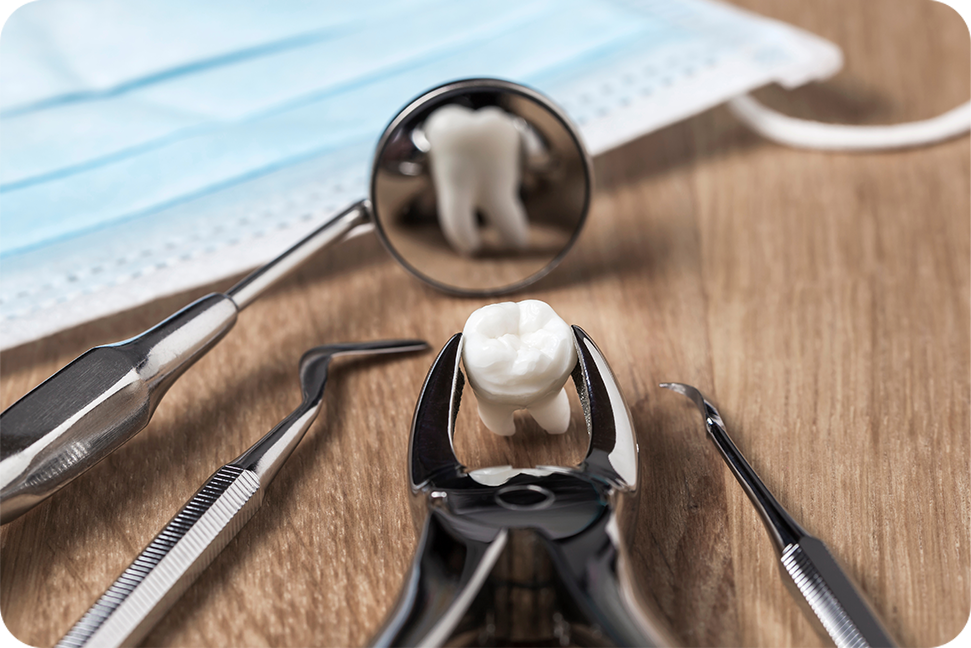
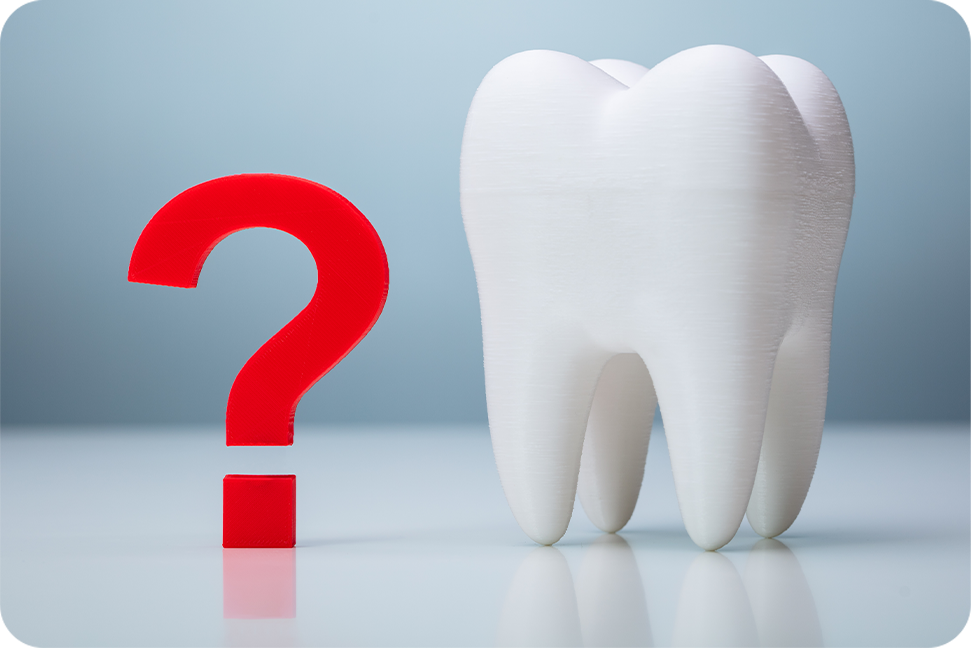
Frequently Asked Questions
🦷 Frequently Asked Questions About Tooth Extraction
- 1. Will I feel pain during the tooth extraction?
Local anesthesia ensures that you won’t feel pain during the procedure, but mild discomfort may occur afterward. - 2. When can I eat after the extraction?
It’s recommended to wait 1–2 hours before eating. Soft and lukewarm foods are best during the initial recovery period. - 3. How long does recovery take?
Recovery for simple extractions usually takes about 1 week, while surgical extractions may take 2–3 weeks. - 4. What happens if the blood clot is disturbed?
Dislodging the blood clot can lead to a painful condition called dry socket. It’s essential to follow the aftercare instructions to prevent this.
Safe and Professional Tooth Extractions with LHC Clinic
🦷 Trust LHC Clinic for Safe and Effective Tooth Extractions
At LHC Clinic, we are committed to ensuring your dental health with the safest and most effective tooth extraction techniques. Our experienced dentists use the latest methods to provide you with a comfortable, pain-free experience. For reliable care and professional guidance, trust LHC Clinic to handle your dental needs.
Regular dental check-ups are key to maintaining a healthy smile—visit LHC Clinic for your next appointment!

Frequently Asked Questions
Facts:
• Frequent sugar intake feeds bacteria in the mouth, producing acids that erode enamel
• Even natural sugars can contribute to decay if oral hygiene is poor
Myths:
• Only candy causes cavities—actually, starchy foods and sweetened drinks can be just
as harmful
• Brushing right after eating sweets prevents cavities—it's better to wait 30 minutes to
avoid brushing softened enamel
Proper care after extraction helps prevent complications:
• Keep the gauze pad in place and bite down gently to stop bleeding
• Avoid spitting, rinsing forcefully, or using straws for the first 24 hours• Refrain from smoking as it hinders healing
• Eat soft, cool foods and avoid the extraction site while brushing
Sticking to these precautions promotes healing and prevents conditions like dry socket.
Effects of Smoking on Oral and Dental Health Smoking adversely affects oral health by: • Increasing the risk of gum disease • Delaying healing after dental procedures • Causing bad breath and staining teeth • Elevating oral cancer risk Quitting smoking improves oral health and the success of dental treatments.
Why Are Color, Shape, and Symmetry Harmony Important in Dental Aesthetics? In smile design, achieving harmony in color, shape, and symmetry is key to creating a natural, balanced appearance. Discrepancies can make even healthy teeth look unattractive. Factors considered: • Matching the veneers or crowns to the natural tooth color and shape • Ensuring proportionate tooth sizes relative to facial features • Aligning teeth for overall symmetry This careful planning ensures the smile enhances the patient’s overall facial aesthetics.
Zirconium crowns are durable, metal-free dental restorations made from zirconia, known
for:
• Exceptional strength and resistance to fractures
• Biocompatibility, reducing the risk of allergic reactions
• Natural-looking aesthetics due to their tooth-like translucency
• Longevity with proper oral care
These crowns are widely used for both front and back teeth, offering a combination of
aesthetics and durability.
